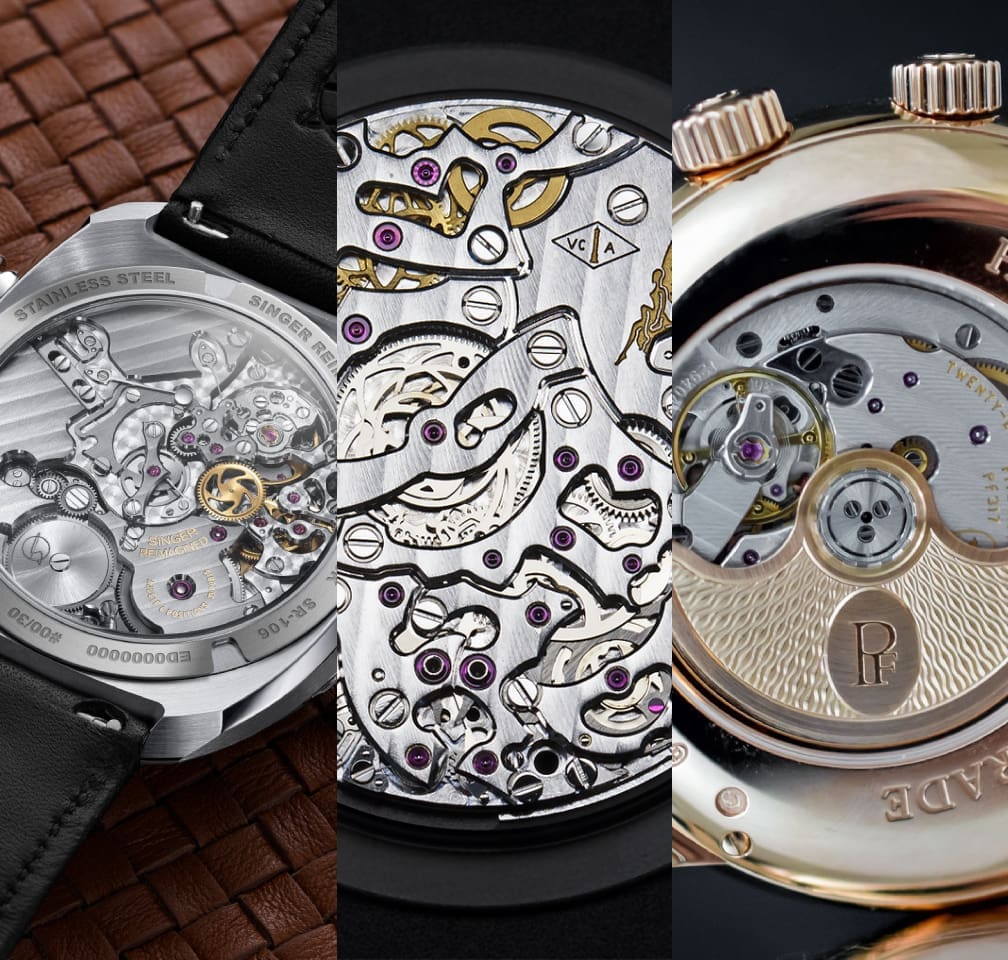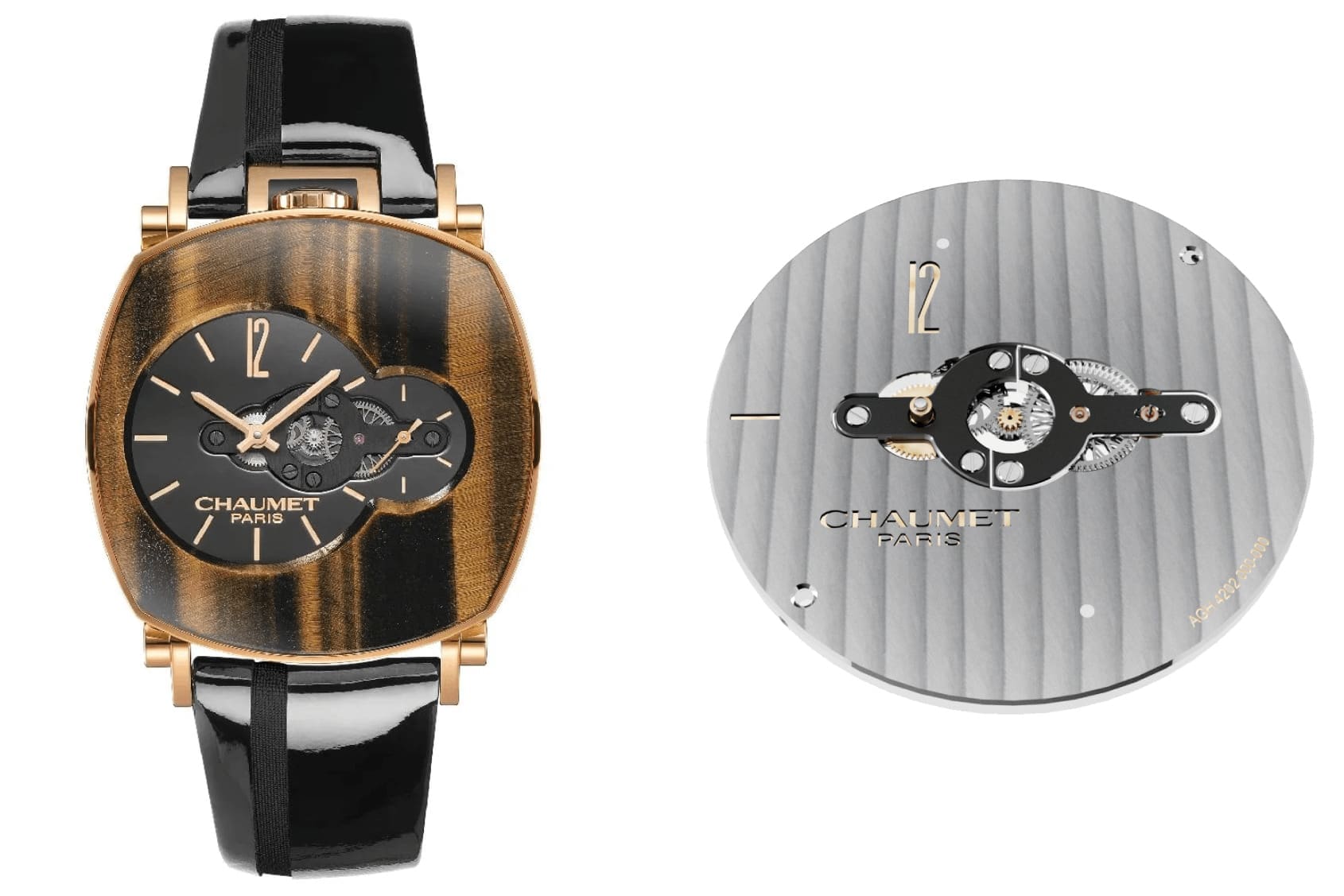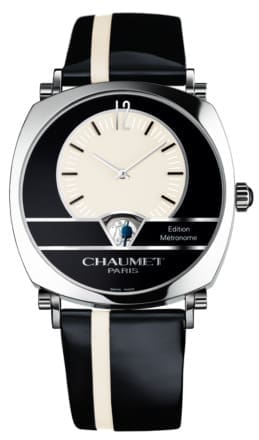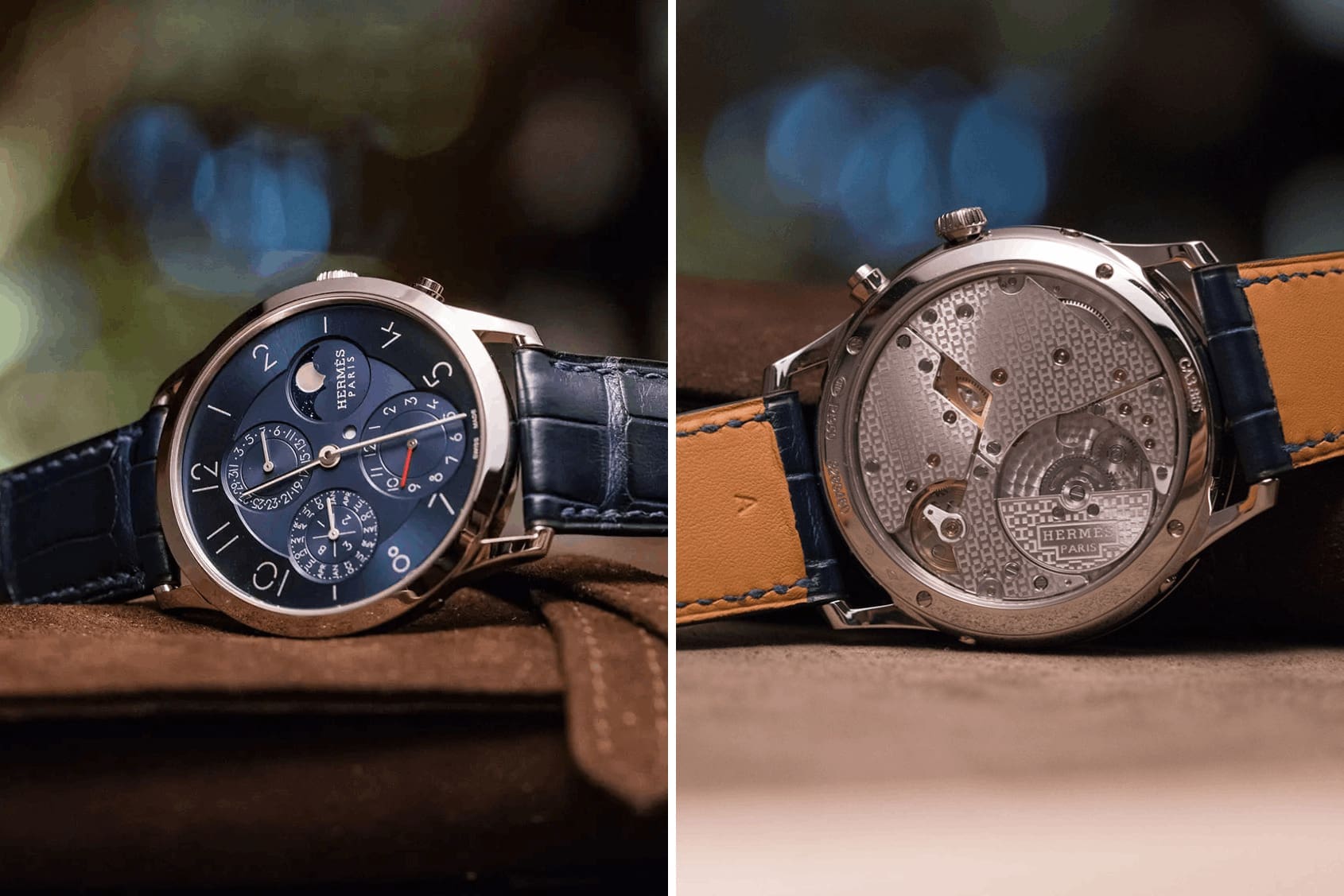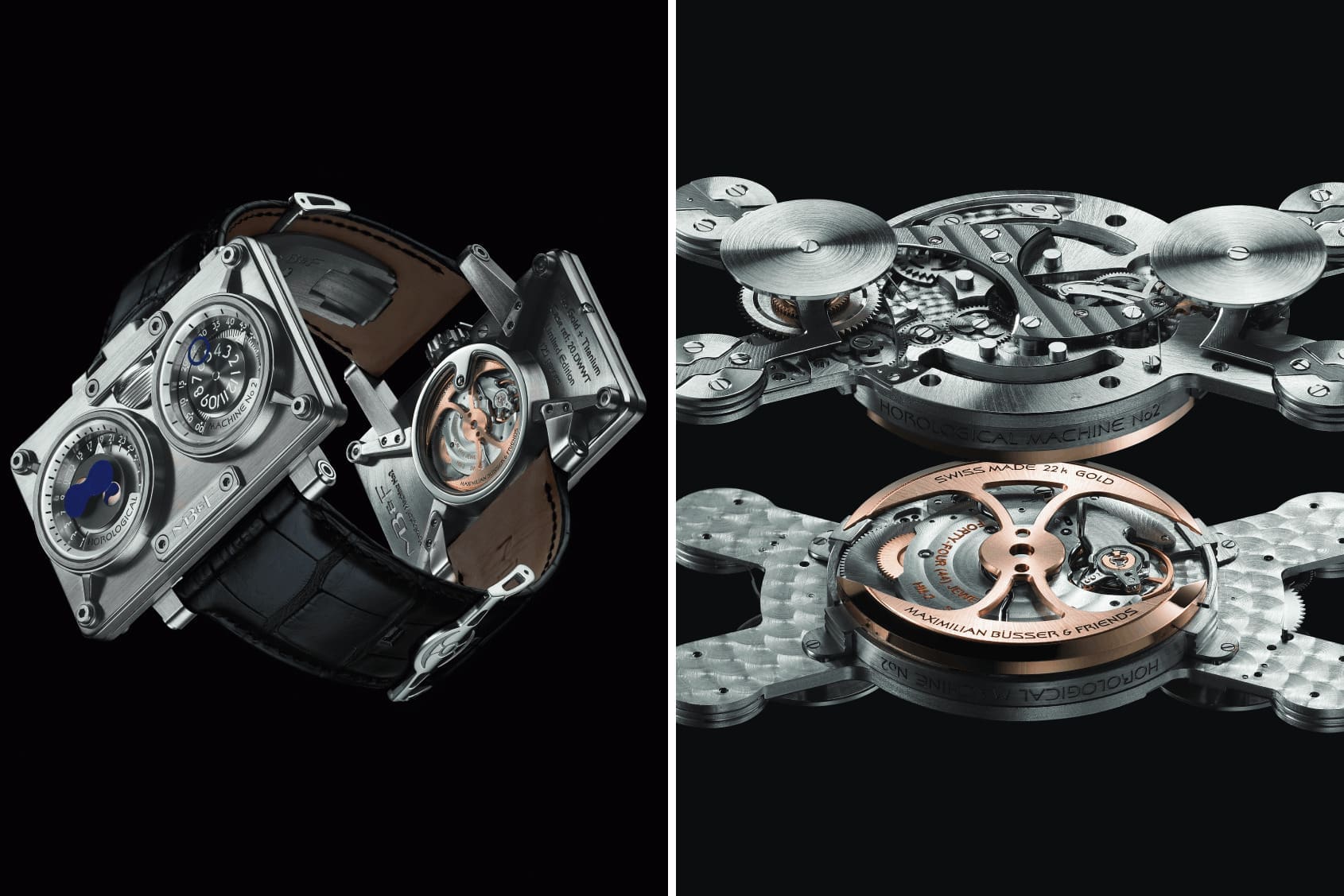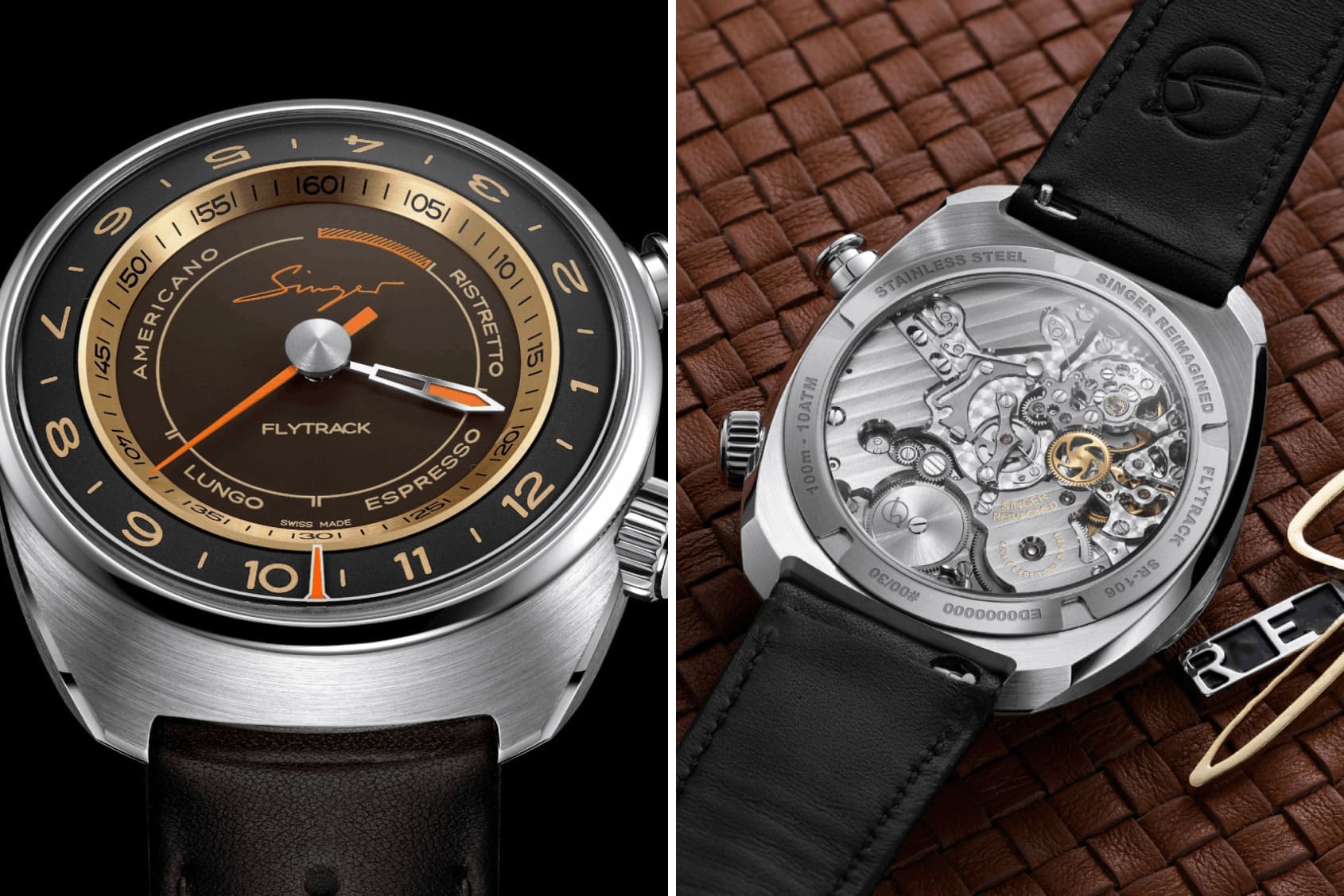Agenhor, and the many movements of the Genevan complication masters (Part 3, Finale)
Borna BošnjakIn the final instalment of this LOTR-rivalling three-part epic, we cover even more movements and complication modules developed by Jean-Marc and Catherine Wiederrecht’s Agenhor. Old faces like Harry Winston and MB&F feature again, with the likes of Chaumet and Romain Jerome the newcomers. You can check out part 1 and part 2 here, should you be in need of another Agenhor fix. Strap in – it’s a biggun.
Chaumet Dandy Arty Open Face and Metronome
We start off with an unlikely customer – Chaumet’s Dandy Arty Open Face. The Dandy was first introduced in 2003, with its off-centre design and silk portion sown into the strap. The Arty Open Face further highlights this asymmetry with the help of an Agenhor-developed modification of an ETA calibre to create the offset hours and minutes indication.
The other Agenhor contribution to Chaumet is the Dandy Metronome, with two seconds hands moving in opposing directions, imitating the regular beats of a metronome. Interestingly, this module was originally housed in a watch produced by Steinway & Sons. Certainly on-brand, if nothing else.
Harry Winston Bi-Retrograde Perpetual Calendar
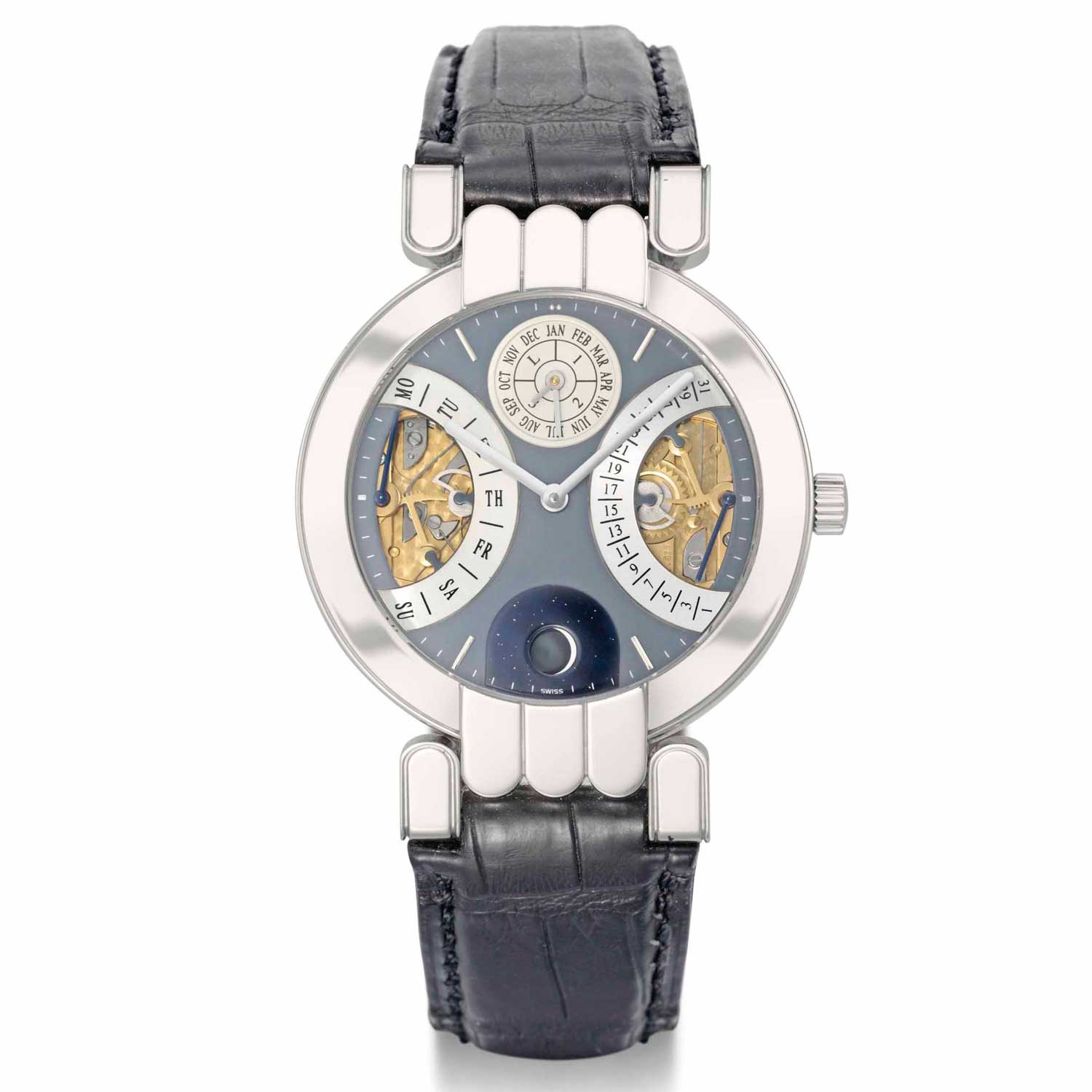
The bi-retrograde perpetual calendar was not a thing before 1989, until two members of Les Cabinotiers de Genève decided to change that. Perpetual calendar watches displayed their information via circular displays or small apertures, but a certain Roger Dubuis and a pre-Agenhor Jean-Marc Wiederrecht believed that displaying the date and day information would be better suited for two retrograde displays. Based on an existing perpetual calendar platform from a previous collaborative effort, the two gentlemen implemented the, according to Mr Wiederrecht, “very simple mechanism” into the Harry Winston piece above. In 1995, Roger Dubuis established his eponymous brand and Agenhor began just a year later.
Hermès slim d’Hermès Quantième Perpétuel
The Slim d’Hermès collection has served as the brand’s platform for more traditionally designed pieces alongside the likes of the Arceau and H08. The Quantième Perpétuel is among the most revered classical complications, though Hermès does sprinkle in some modern contemporary design features such as the unique typeface and bold lug design. Movement-wise, the watch is powered by a Vaucher-produced H1950 micro-rotor calibre with an Agenhor perpetual calendar module that also includes a second time zone tucked away at 6 o’clock. Despite the modular movement design, it’s impressively thin at only 4mm, though the repeating H pattern decoration may not be for everyone.
Hermès Slim d’Hermès GMT

The Slim d’Hermès GMT could be considered a pared-back version of the perpetual calendar, as it features the same Vaucher base, but this time the Agenhor module “only” provides a second time zone, which is placed at 10 o’clock, just like the button to operate it. You’ll immediately notice the quirk of this watch however, which lies in the layout of the GMT subdial and its strange smattering of numbers. It’s certainly not that easy to read at first, though I guess it does go with the overall quirky aesthetic of the piece.
MB&F Horological Machine 2
If you’re after something more than quirky, MB&F is basically quirky on crack. Every single Legacy Machine or Horological Machine is an unique, amazing creation, and the HM2 is no different. The two round dials in a rectangular case feature a moonphase display, hour display and two retrograde displays. Just look at that movement architecture – chef’s kiss. Modified from a Girard-Perregaux/Sowind base, it consists of 400-odd components, including the signature battle axe rotor in 22k red gold, all executed by Agenhor.
Parmigiani Fleurier Toric Hemispheres Retrograde
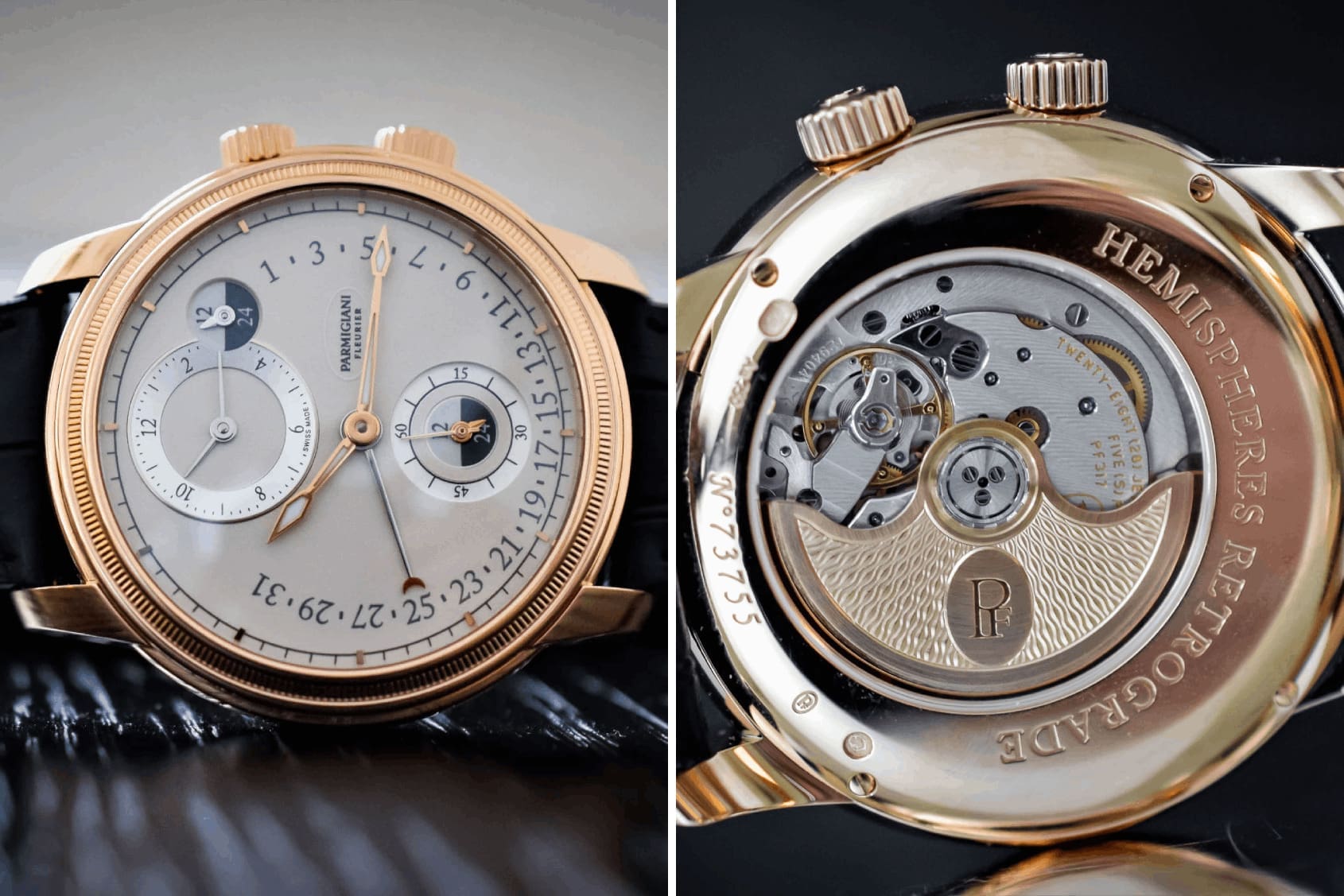
Parmigiani has been a long-time collaborator with Agenhor, and the Toric Hemispheres Retrograde is part of this partnership. Designed by Michel Parmigiani, the Toric was first introduced in 1996, its lines inspired by the golden ratio. The retrograde function in this piece is responsible for date indication, while the Agenhor module built around the PF317 calibre and hidden by the off-centre display caseback allows the wearer to adjust the second hour and minute indication to the nearest minute, accounting for those odd time zones.
Romain Jerome Spacecraft
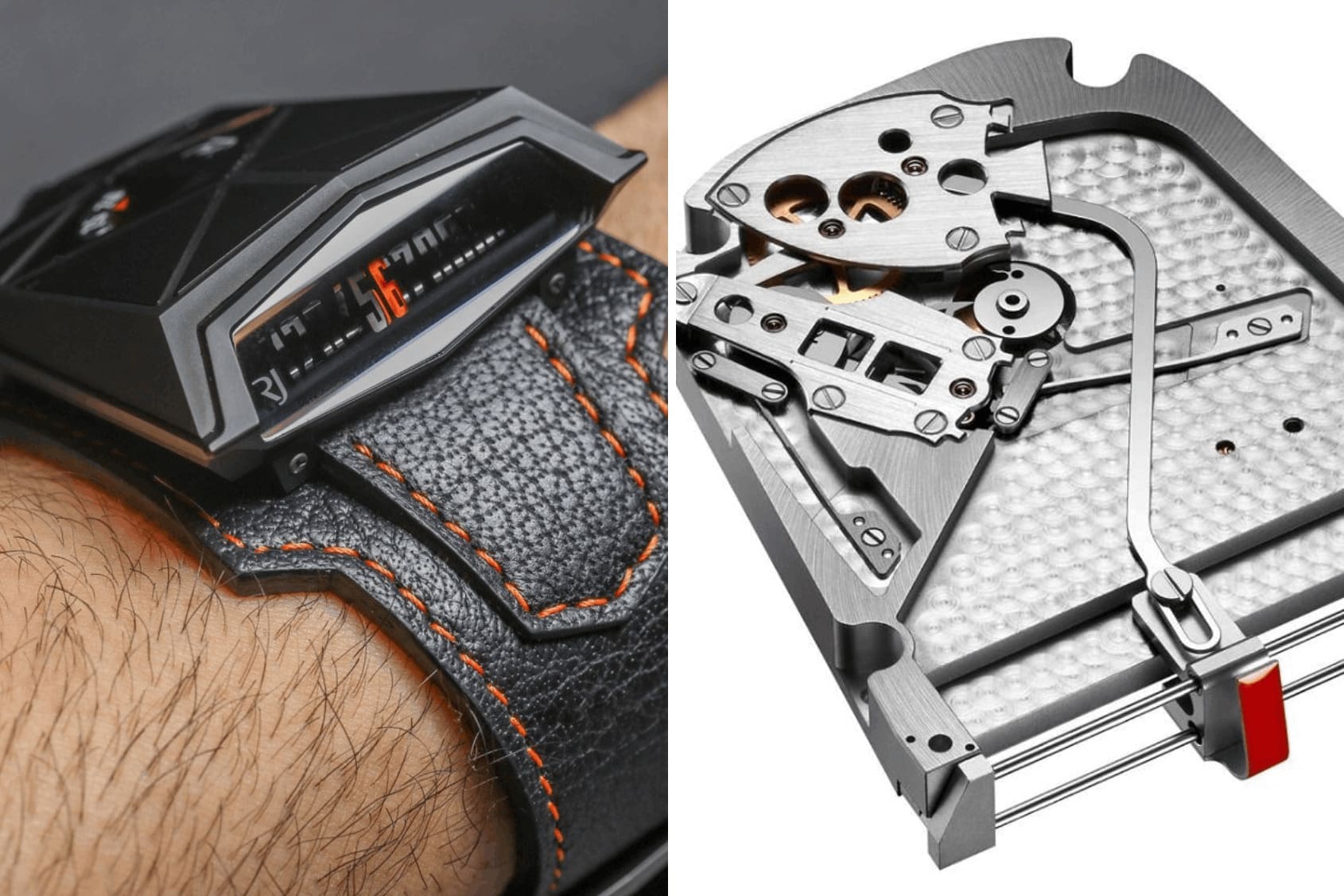
Romain Jerome is no longer with us, and though their more ridiculous pieces like the Hello Kitty got most of the spotlight, there were a couple of gems in their collection. The Spacecraft is one of them, with contributions by Mr Wiederrecht and renowned watch designer Eric Giroud. Inspired by the design of Darth Vader’s helmet and 1970s ideas of what 2010 would look like, it bears more than a passing resemblance to another highly conceptual design from MB&F. Nevertheless, the fact that the base calibre is modified from an ETA 2892 is impressive considering how much of it must’ve been changed to take on its current appearance. It uses a horizontal red marker to display the retrograde jumping hours, while displaying the minutes on a disc atop the case.
Singer Reimagined FlyTrack Barista Edition
We’ve already covered the coveted AgenGraphe chronograph movement, a version of which powers the FlyTrack Barista Edition. Instead of counting up the minutes and hours like most chronographs, the FlyTrack Barista is more focused on perfecting the accuracy of your espresso pulls, with an inner scale split into sections referring to the type of coffee you’re attempting to make. Start the chrono at the beginning of infusion time, and off you go – pretty self-explanatory really. Admittedly, this isn’t an incredible complication per se, but a potentially wasteful yet fun way to make use of a brilliant chronograph calibre.
Van Cleef & Arpels Pont des Amoureux
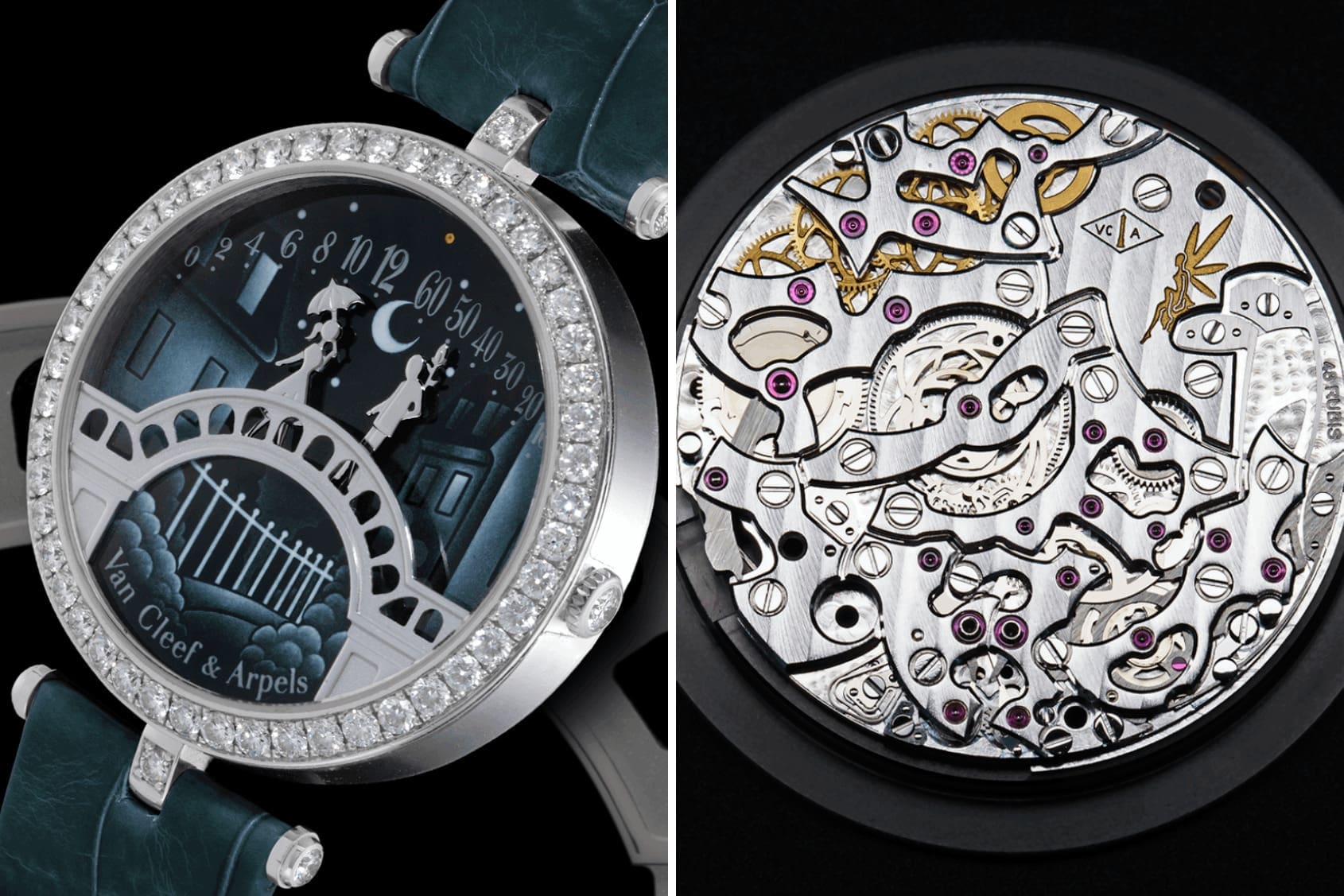
While much of the wonder of the Pont des Amoureux comes from the beautiful grisaille enamel work on the dial, the Agenhor-developed module fitted on a ValFleurier Q020 calibre is no less impressive. The complication uses a combination of gears and snail cams to bring the two silhouettes across the bridge of love for a three-minute make-out sesh at midday and midnight. While this happens automatically, you can also trigger the function on-demand, and though such an automaton would normally be very delicate, Agenhor ensured it to be as fool-proof as possible. I highly recommend the Revolution write-up for those wanting a bit more detail on this awesome complication.
Van Cleef & Arpels Poetic Wish
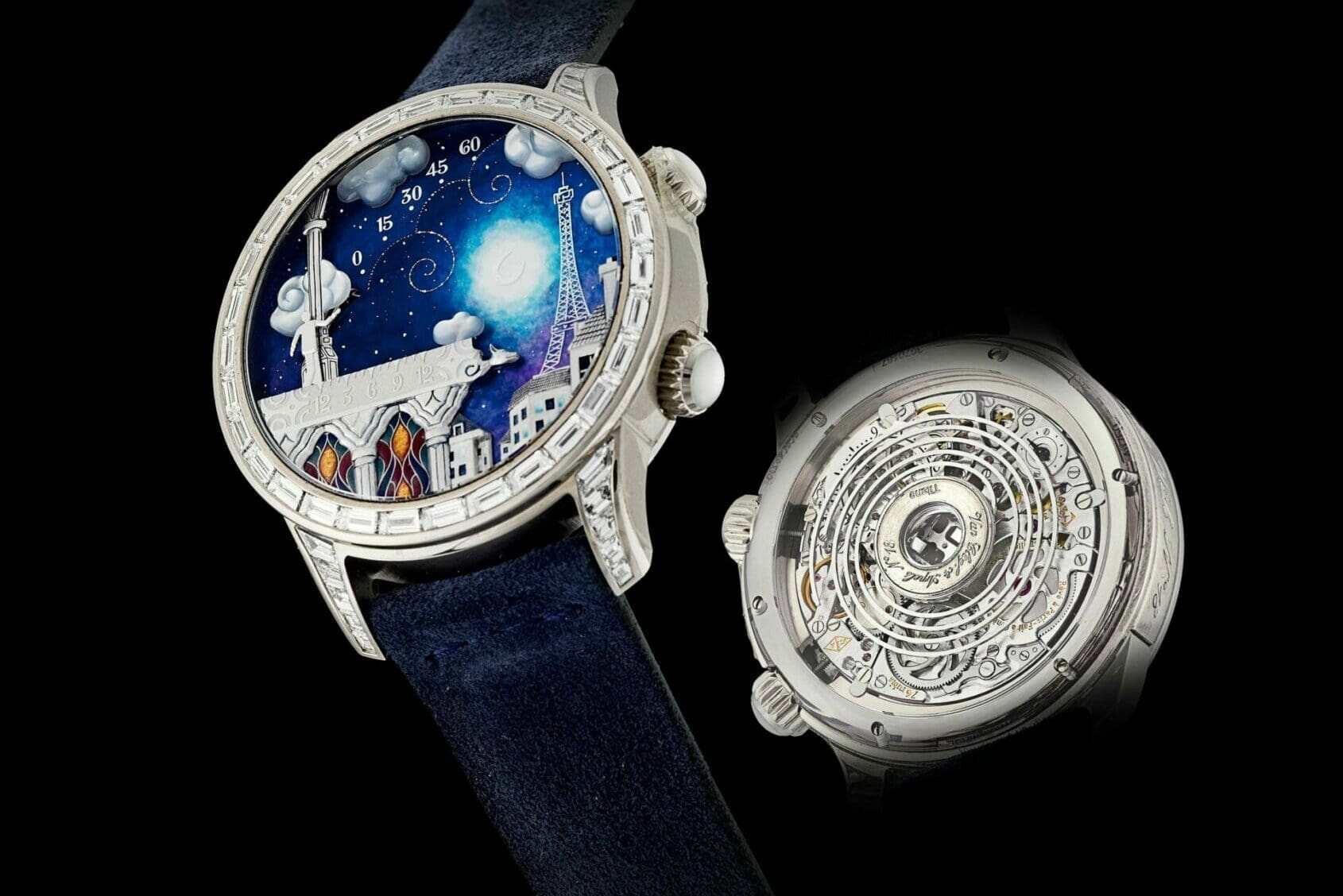
Another wonderful product of the Agenhor and VC&A collaboration is the poetic wish, but rather than using a module, this movement is entirely produced by Agenhor. The movement is a retrograde display with a constant force escapement, a central five-minute repeater and three barrels – one dedicated to the figures on the dial. The retrograde function is part of the time indication, which also incorporates an animated display, while the centrally positioned hammers, seen through the aperture in the middle of the caseback, allow the sound to resonate outwards via the long, spiralling gongs. The constant force escapement is just the cherry on top.





